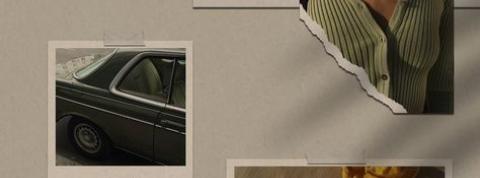
How to make a fashion portfolio for the luxury industry?
The portfolio is the key tool for presenting your work at an interview in the luxury, fashion and, of course, art industries. Here is everything you need to know to create an impactful and memorable portfolio.
How to make a fashion portfolio?
Whether it's for a future employer or to get into a school, the first thing to do is to present yourself. Like a CV, this first part of your portfolio should describe your background, your qualifications, your strengths and weaknesses, and your future projects.
To add weight and credibility to your fashion portfolio, don't hesitate to introduce your references, which show your seriousness and involvement. To stand out, it is also important at this stage to highlight your various production techniques (photography, angle, choice of setting, etc.). This kind of detail helps to better define your creative approach and therefore your personality.
Of course, don't forget to add your personal information so that we can contact you (telephone, social networks, e-mail...)
Once the presentation stage is over, you must now classify, sort and present your different works through an organised layout. This presentation is the heart of the fashion portfolio, the showcase of your aesthetic. Each of your works must be accompanied by a description explaining your approach and your approach, the key points and specificities.
Important: A fashion portfolio is very often required by employers in the luxury industry, particularly for positions as stylists or in marketing. To best prepare you to enter the world of luxury, the MSc Fashion & Luxury Business is a reference programme offered by Sup de Luxe, preparing students for management positions in the international luxury sector. Art management and specificities, design and creative team management, introduction to product design and communication design... These are all essential notions for entering the fashion and luxury industry.
What is the format of a portfolio?
There are two main types of format for displaying your content:
- The printed portfolio (often required for fashion designers): For your fashion portfolio, opt for an A4 or A3 format, landscape or portrait: this size is large enough to present your work and is not too bulky to carry around easily.
- The digital portfolio: Increasingly used, it is gradually replacing the printed portfolio. More practical, you can upload your work online via specialised platforms.
Specifications of a fashion portfolio for the luxury industry
Create your own identity
Be unique! To do this, don't hesitate to display your various moodboards that trace your intellectual path and represent your DNA. A fashion portfolio must express your style, so choose visuals that are impactful and differentiating.
Selecting your work well
Even if you have a large number of pieces/photos/sketches to exhibit, choose the most visually powerful ones. Take the time to make a real selection and propose an airy portfolio by keeping only your best work.
Update your portfolio regularly
Creating a beautiful portfolio is good, improving it regularly is even better! Pay attention to the details and revise your presentation often to stay on trend and stand out. For a functional and coherent stylist's portfolio, keep an eye on your various shoots and your latest sketches to stay up to date!
Where to make my portfolio?
As far as the digital portfolio is concerned, there are adapted platforms allowing you to layout, conceptualize and put your content online. Free or paid, here are a few examples of how to make a good portfolio:
- Canva: Very easy to use and offering many free versions, Canva provides a powerful result and has a large choice of templates.
- Behance: A real social network for creative people, this site also allows you to create your portfolio and distribute it online.
- Webflow: Conceptualize your showcase via this playful site, with original templates and create a real site around your portfolio.